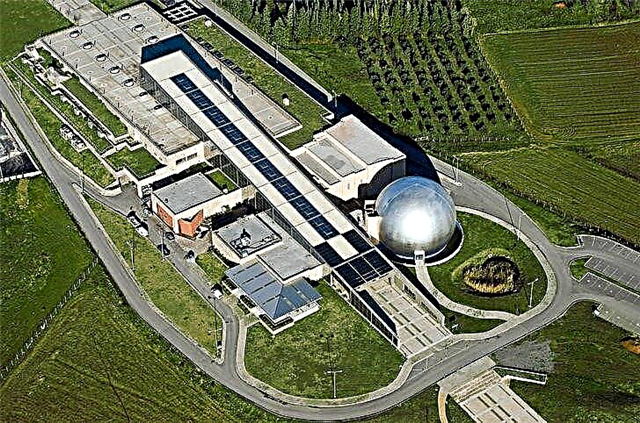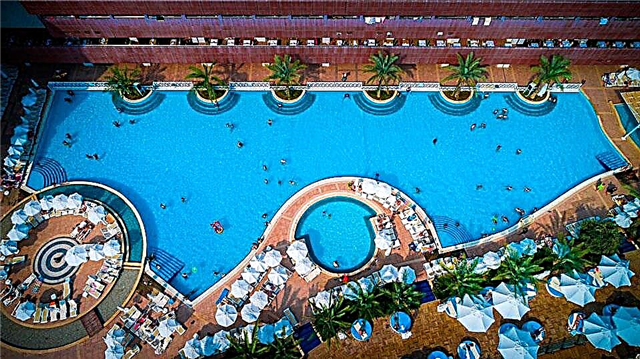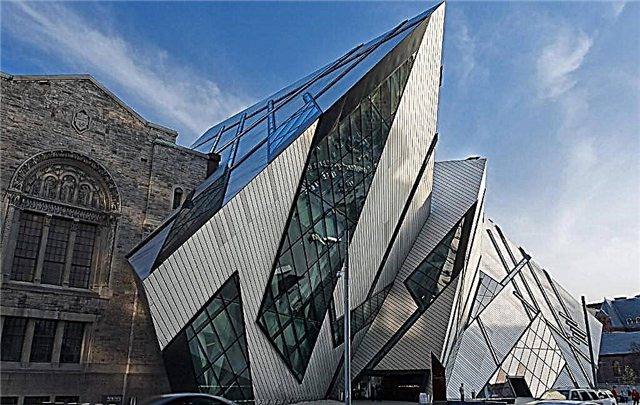Thessaloniki was founded in the 3rd century BC. e. Since then, the city has repeatedly become the arena of significant historical events. Moreover, Thessaloniki remains an important center of Christianity - the Apostle Paul preached here and the enlighteners Cyril and Methodius were born. The architectural heritage of the city is priceless, despite the fact that the historic quarters were destroyed in a fire in 1917. The overwhelming majority of city churches and monasteries of the Byzantine period are included in the UNESCO World Heritage List.
Thessaloniki is a popular Aegean resort and the cultural capital of Greece. Local beaches are marked with a "blue flag" for their cleanliness, comfort and convenience for tourists. The city hosts many colorful festivals and interesting events throughout the year. The architectural monuments of the Roman, Byzantine and Ottoman eras are located right in the middle of residential areas.

The best hotels and hotels at affordable prices.
from 500 rubles / day
What to see and where to go in Thessaloniki?
The most interesting and beautiful places for walking. Photos and a short description.
White Tower
Presumably, the building was erected in the X century, as evidenced by the surviving inscription on one of the walls. For centuries, the tower was part of the fortress fence that separated residential areas from the cemetery. It reaches a height of 27 meters, the diameter of the wall ring is 23 meters. In 1912, the building was painted white and received its modern name. Today, there is a museum on the territory of the tower.

City embankment
The place where all the tourist routes of Thessaloniki start. The street is located on the site of the city walls that were demolished in the 19th century. It stretches from the White Tower to the port. The embankment runs along the very edge of the water. There are bustling avenues and hotels on the shore. Cycle paths and pedestrian paths are equipped for tourists, cozy green squares are also laid out, where you can take a break from the midday heat.

Aristotle square
The central square of Thessaloniki, which finally took shape at the beginning of the 20th century, when the entire city underwent a large-scale reconstruction after a fire. Concerts, celebrations, political rallies and other social events are constantly held here. Aristotle Square is home to the monumental neoclassical buildings of the Electra Palace Hotel and the Olympion Cinema.

Monument to Alexander the Great
The monument is located on the city embankment in the immediate vicinity of the White Tower. The inhabitants of Thessaloniki have a special relationship with the personality of Alexander the Great. It was during his reign that the city reached its maximum prosperity. The figure of the king is seated on a rearing horse. On a wide pedestal behind the Macedonian statue, spears with shields are attached, on which symbolic images are applied.

Archaeological Museum of Thessaloniki
The museum was opened in 1962 in a building designed by P. Quarantinos. The exposition covers a wide period in the history of the region of Macedonia in general and the city in particular. A large number of artifacts have been found as a result of excavations. The Archaeological Museum of Thessaloniki is considered one of the best in Greece. Many valuable artifacts are several hundred years old and are of great value to history.

War Museum of Thessaloniki
The museum has been operating since 2000. The exposition is located in a building of the early XX century, it is considered part of the collection of the Military Museum of Athens. It contains artifacts and documents related to various events that took place in the history of Greece: the Balkan Wars, the Greco-Italian War, the Greek Revolution, the First and Second World Wars. There is a library at the museum, where the publications of the Greek defense department are kept.

Museum of Byzantine Culture
The museum was established in 1994 under the authority of the Greek Ministry of Culture and Tourism. The exposition, as the name suggests, is dedicated to the cultural history of the Byzantine Empire. The collection is housed in several thematic rooms. The decision to establish the museum was made in 1913. During the First World War, all artifacts were taken to Athens for security purposes. The meeting did not return to its place until several decades later.

Museum of the Macedonian Struggle
The museum collection is dedicated to aspects of the armed conflict of 1904–1908. and its consequences (the struggle of Greece for the region of Macedonia). It is located in a 19th century neoclassical building designed by E. Ziller. Among the exhibits there are weapons, personal belongings of the leaders of the struggle, books, newspapers, valuable archival documents. The museum hosts group tours and educational lectures.

Ataturk House Museum
The famous Turkish leader Mustafa Kemal Ataturk was born in Thessaloniki in 1881, when the city was part of the Ottoman Empire. The house where he spent his childhood and youth was turned into a museum in the middle of the 20th century. It was here that the reformer discussed the ideas of a free democratic state with his associates. All furnishings, pieces of furniture, documents, personal belongings of Ataturk in the building are genuine.

Science Center and Museum of Technology
The museum was founded in 1978 in order to popularize scientific discoveries and research. The exposition contains various technical mechanisms and devices that people have invented since ancient times. The museum also has a digital planetarium, a virtual attraction and an interactive technology park where you can explore various natural phenomena in action.

Jewish Museum
The exposition opened in 2000 on the territory of the neoclassical building of 1904, which previously housed the Bank of Attica. The building miraculously survived during the devastating fire that engulfed the city in 1917. The collection is dedicated to the everyday and cultural aspects of the life of the Jewish community of Thessaloniki. An impressive part of the collection tells about the events of the Holocaust that swept Europe in the 1930s and 1940s.

Basilica of Saint Demetrius
A temple built on the site of ancient Roman baths in the 4th century (according to one of the generally accepted versions). The first building of the basilica existed until the 7th century, then it was destroyed by earthquakes and fires. In the XIV century, a mosque was housed in the temple. Christian services resumed at the beginning of the 20th century. During a fire in 1917, the building was badly damaged and was reconstructed by the 1950s. The relics of St. Demetrius of Thessalon are kept in the temple.

Temple of Hagia Sophia
Orthodox church, a UNESCO World Heritage Site. It is believed that the first basilica on this site appeared in the 5th century. In the VIII century, a building was erected, which has survived to this day. In the 11th century, the temple was rebuilt and significantly expanded, from the 15th to the 20th centuries. it was used as a mosque. After the return of Thessaloniki to Greece following the results of the First Balkan War, the church was again transferred to the Christian community.

Vlatadon monastery
Orthodox monastery, founded in the XIV century with the active assistance of the Byzantine empress Anna Palaeologus, who at that time settled in Thessaloniki. The main cathedral of the monastery is a magnificent architectural monument of the Byzantine era, which survived several centuries and has been preserved in excellent condition. The rest of the buildings belong to later periods.

Latomu monastery
The monastery is located in the central part of Thessaloniki. It was founded in the 5th-6th centuries, but the ancient buildings have not survived to this day. Like many other Christian monasteries and churches, the main temple of Latomu was turned into a mosque under the Ottoman Turks and existed in this capacity until the beginning of the 20th century. During the restoration work, frescoes of the 12th century were discovered under a layer of plaster.

Church of St. Nicholas Orphanos
The main cathedral of the Vlatadon monastery, dedicated to Saint Nicholas the Wonderworker (Orphanos). The foundation of the temple dates back to the beginning of the XIV century. The interior wall painting of the church is well preserved due to the fact that the walls were covered with plaster (the temple was used as a mosque until the 17th century). The building is included in the UNESCO World Heritage List as a valuable monument of early Christian architecture.

Church of St. Panteleimon
Byzantine temple of the XIII century, which is located in the center of Thessaloniki. Modern quarters surround it on all sides. Despite the fact that the church is included in the UNESCO register, it has not been fully restored. In some places, the building has a rather neglected appearance, but this does not in the least detract from its architectural value. The interior has been lost; only a few original frescoes have survived.

Panagia Chalkeon Church
A picturesque cross-domed church of the early Christian period, erected in the XI century. The church building is built of red bricks. After the passage of Thessaloniki back to Greece in 1912, the temple remained abandoned until the 1930s. During the restoration work, the Panagia Chalkeon Church acquired its original appearance. Unfortunately, the interior wall painting has not been preserved very well.

Arch of Gallery
An architectural monument of the Roman era, which is part of the burial complex of the emperor Maximilian Galerius, who ruled in the III-IV centuries. In the 5th century, the building was converted into a church; from the 14th century, a mosque was located here. Only part of the stone wall with bas-reliefs and two arched passages has survived to this day. Arch of Galerius is one of the most significant architectural monuments of Thessaloniki.

Rotunda Galeria
The construction of the beginning of the 3rd century, presumably built in honor of the pagan god Zeus. According to another version, it is the memorial complex of Emperor Maximilian Galerius. In the 4th century, the building was converted into a church, in the 16th century, the Sheikh S. Kh. Efendi Mosque was made from it. In the period 1912-1978. on the territory of the rotunda there was an exhibition of Byzantine and early Christian sculpture.

Greek agora and Roman Forum
The ancient Roman forum was discovered in the 1960s. as a result of excavations in the central part of Thessaloniki. Even earlier, the Greek agora was located here - a wide square surrounded by temples, public buildings and craft workshops. The theater has survived from the ancient buildings, which, after restoration, began to be used for concerts, as in the times of Ancient Greece and Rome.

Eptapyrgio Fortress
The northern part of the fortress was built in the 4th century under the Emperor Theodosius I (according to an alternative version - in the 9th century), the southern one appeared much later - in the 12th century. Until the 19th century, the fort was used for military purposes, then a prison was located on its territory. Since the late 1980s. the building was transferred to the jurisdiction of the Ministry of Culture and Tourism. In 1995, the first phase of the archaeological excavation was completed.

OTE TV tower
The TV tower was erected in 1966 and reconstructed in 2005. The structure is 76 meters high. Inside, on a revolving platform, there is a panoramic restaurant that makes a full revolution on its axis in 40 minutes. The TV tower also has an observation deck from where you can admire Thessaloniki. The interior of the building is used for various official events.

Modiano Market
A large market, which began work in 1922 thanks to the merchant of Jewish origin E. Modiano. The shops are located near Aristotle's Square almost in the very center of Thessaloniki. The market sells local products, souvenirs, flowers and other goods. There are also taverns-uzeri, where creative people gather. Not far from the bazaar there is a complex of Turkish baths Yahudi Hamam.

Waterland water park
The water park is located 8 km from Thessaloniki. It was opened in 1994. At that time, its technical equipment was considered one of the best in southern Europe. Today "Waterland" looks a little outdated, but this does not prevent tourists from visiting it at all. The water park has eight slides, several pools, bars, sports fields, a play area for children and equipped picnic areas.












